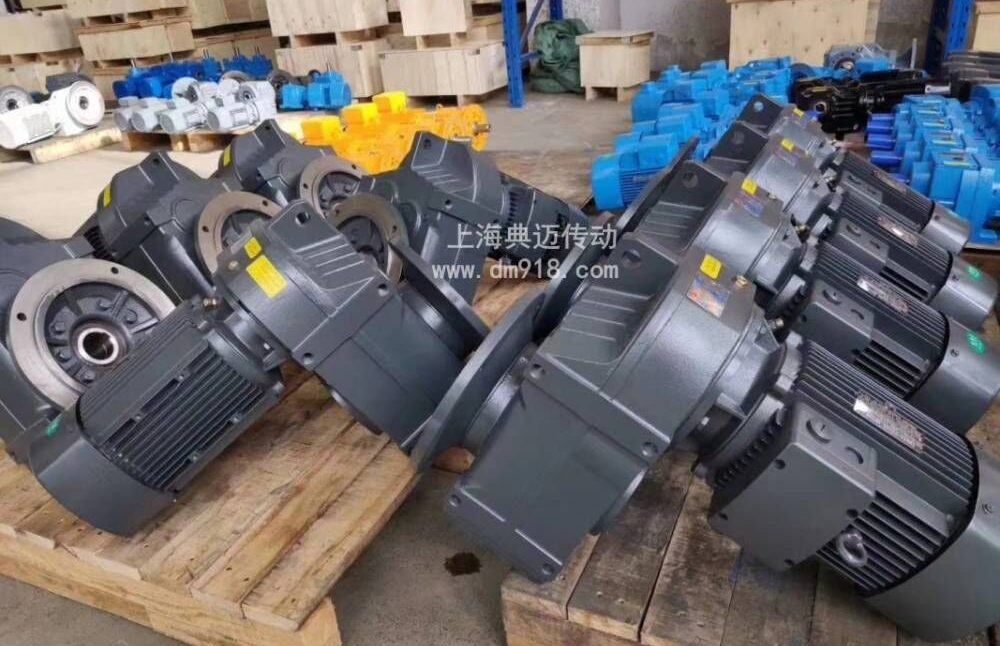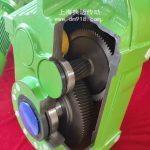The F series parallel shaft helical gear reducer is a common and efficient transmission device. Its working principle is based on the basic principle of gear transmission and combines the design characteristics of helical gears and parallel shafts.
In this type of reduction motor, the high-speed rotational movement of the motor is transmitted into the reducer through the input shaft. Usually, a small gear is installed on the input shaft, and meshing with it is a larger helical gear.
The tooth profile of the helical gear is inclined at a certain angle. Compared with the spur gear, during the meshing process of the helical gear, the contact of the teeth gradually transitions from one end to the other, thereby achieving a smoother transmission and reducing shock and vibration.
Since the number of teeth on the gear of the output shaft is more than that on the gear of the input shaft, according to the speed ratio relationship of gear transmission, the rotational speed of the output shaft will decrease, while the torque increases.
The parallel shaft design makes the input shaft and the output shaft parallel to each other. This structural layout is compact and convenient for installation and maintenance.
During the transmission process, energy is transmitted through the meshing between gears. The precise manufacturing of gears and good lubrication ensure the efficiency and reliability of the transmission.
When the motor drives the input shaft to rotate, through the deceleration effect of the gears, the output shaft outputs power at a lower rotational speed and a larger torque, thereby meeting the requirements of various mechanical equipment for different rotational speeds and torques.
In conclusion, the F series parallel shaft helical gear reducer, through ingenious gear design and layout, achieves the conversion of high-speed and low-torque input into low-speed and high-torque output, providing stable, reliable and efficient power transmission solutions for numerous industrial applications.



